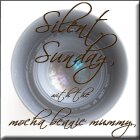 |
| Lyra the intrepid boat cat |
Dogs seem a popular choice of pet amongst live-aboard boaters. Canal boat cruising is something that most dogs really enjoy, with lots opportunities for exercise and new dogs and people to meet on towpath walks. As always it's important to be responsible about clearing up after your dog, so that the towpath remains pleasant for all to enjoy. It is a traffic free area for walking your dog, although you must remain aware of road bridges. It may be difficult to keep an eye on your dog while working through a lock, so you will have to decide whether your dog would be happiest confined to the boat, or alternatively tied up somewhere safely near the lock, until he (or she) gets used to boat life and you are confident that he is aware of the dangers of the water. While some dogs are happy to swim anywhere, a lock is very deep and has strong under currents. If you move on board to somewhere rural and your dog isn't used to the country life, then make sure that you keep him away from livestock and water fowl.
Cats are more than happy to walk along the gunwales and peer into the windows of your boating neighbours. They can get on and off a boat more easily than dogs. I have met several boaters who keep cats on board. Cats do get used to it, but if they are out exploring and you need to move the boat you may just have to wait for them to come home; bear in mind this could take a couple of hours. When you first move home, as most cat owners will know, you should keep them indoors for two weeks to get them used to their new environment. One cat lover I know has trained her cats to recognise the sound of treats rattled in a plastic box. She rattles this box as a signal for them to come back to the boat when it's time to go off cruising. Her other word of advice is that whenever it is possible avoid mooring too close to busy roads.
As for other pets, you will have to judge for yourself whether your main cabin has enough room for a bird cage, hamster cage, goldfish bowl or fish tank. Have a look at the variety of boats for sale at Boatshed Grand Union to get an idea of what live-aboard canal boats are available. Some deck spaces are large enough for a rabbit hutch, but if you don't have a mooring there may not be much scope to let the rabbits run around. Having said that, I have seen two boats that kept chickens before. The first was a 50 ft live-aboard narrowboat; the couple on board had set up a small chicken coop on the grassy towpath. I also used to know a couple who sold solid fuel from their pair of working boats. They actually had enough room in one of the holds for a reasonably sized chicken run!
 |
| Ben the boat dog - from the Bert and Betty stories (http://www.thebraunstonboaters.co.uk/) |
More about Lyra the Boat Cat: http://nbluckyduck.blogspot.com/
Disclosure: I wrote this post for the Boatshed Grand Union website.
Visit http://peggymelmoth.wordpress.com/ for remote secretarial services, audio transcription, copywriting, business blogging or freelance writing commissions.








